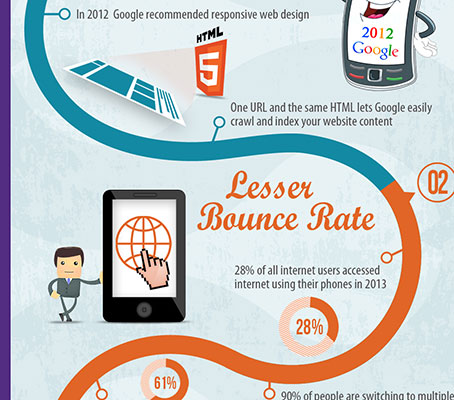Core Concepts Of Site Style: Recommendations For Crafting A User-Friendly Online Existence
Core Concepts Of Site Style: Recommendations For Crafting A User-Friendly Online Existence
Blog Article
Content By-Scarborough Skinner
When it involves site layout, ensuring user-friendliness is essential. From receptive layout to structured navigation, every component plays an important function in producing a website that deals with your audience's demands. But what about the finer details that can make or break a customer's searching experience? Stay tuned as we discover some often-overlooked ideas that can elevate your internet site's functionality to the next degree, making it really attract attention in the electronic landscape.
Significance of Responsive Style
Responsive design is a critical element of modern-day website development. Guaranteeing your site is responsive ways that it can adapt to different display sizes and devices, offering a seamless experience for individuals.
With the enhancing use smart devices and tablet computers to access the net, having a responsive style is vital for getting to a wider audience. It helps in boosting individual experience by making your internet site simple to browse and keep reading any tool.
In addition, responsive layout can favorably impact your internet search engine positions, as online search engine like Google prioritize mobile-friendly web sites. By having a receptive design, you're also future-proofing your web site, as new devices with varying screen sizes continue to emerge.
Simplify Navigating Framework
To improve user experience and facilitate very easy access to info on your site, enhancing the navigation structure is vital. When designing your site, concentrate on producing a clear and instinctive navigation food selection that assists visitors discover what they're seeking quickly.
Restriction the number of menu products to the essentials, organizing relevant pages with each other to stay clear of frustrating customers. Use descriptive labels that plainly show the content of each page, making it simpler for customers to understand where each link will take them.
Take into consideration applying dropdown menus for subcategories to prevent jumbling the main navigating bar. Furthermore, consist of a search bar plainly on the page for users who favor looking for certain details.
Focus on mobile responsiveness in your navigating design to ensure easy gain access to on all tools.
Enhance Web Page Load Rate
Improving web page lots speed is critical for maintaining visitors on your site. Slow-loading pages annoy users and can lead to high bounce rates. To optimize web page load rate, beginning by optimizing images. Press photos without endangering high quality to minimize their data dimensions.
Additionally, allow browser caching to save regularly accessed resources in your area, accelerating tons times for returning site visitors. Minify CSS, JavaScript, and HTML documents by removing unneeded personalities, remarks, and format, boosting load rate.
Consider making please click the up coming post of a material delivery network (CDN) to distribute your website's content throughout multiple web servers worldwide, minimizing latency for users accessing your site from various places. Finally, restrict using third-party scripts and plugins, as they can dramatically influence tons times.
Click On this page
To conclude, by including receptive style, streamlining navigation, and maximizing page tons speed, you can produce an user-friendly site that attract a larger audience and boosts user experience. These essential elements guarantee that site visitors can conveniently gain access to and navigate your website across different devices, bring about increased engagement and complete satisfaction. By focusing on these vital facets, you can build an effective web site that keeps individuals returning for more.
